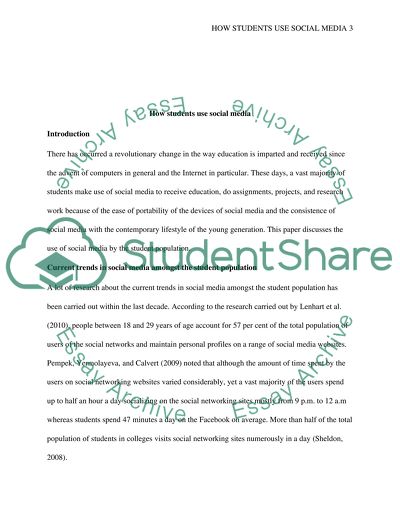Cite this document
(“How Students Use Social Media Assignment Example | Topics and Well Written Essays - 1250 words”, n.d.)
How Students Use Social Media Assignment Example | Topics and Well Written Essays - 1250 words. Retrieved from https://studentshare.org/sociology/1465621-how-students-use-social-media
How Students Use Social Media Assignment Example | Topics and Well Written Essays - 1250 words. Retrieved from https://studentshare.org/sociology/1465621-how-students-use-social-media
(How Students Use Social Media Assignment Example | Topics and Well Written Essays - 1250 Words)
How Students Use Social Media Assignment Example | Topics and Well Written Essays - 1250 Words. https://studentshare.org/sociology/1465621-how-students-use-social-media.
How Students Use Social Media Assignment Example | Topics and Well Written Essays - 1250 Words. https://studentshare.org/sociology/1465621-how-students-use-social-media.
“How Students Use Social Media Assignment Example | Topics and Well Written Essays - 1250 Words”, n.d. https://studentshare.org/sociology/1465621-how-students-use-social-media.


